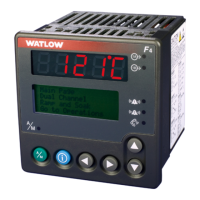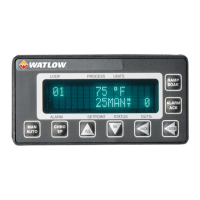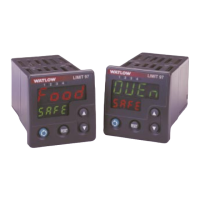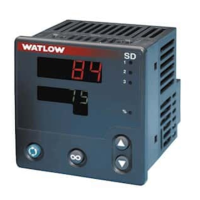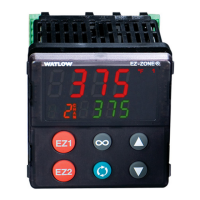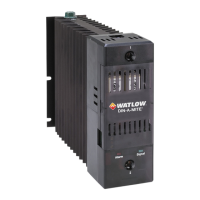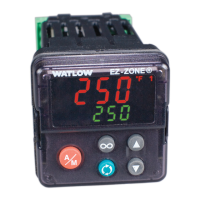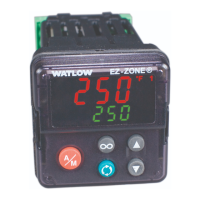Watlow F4T • 169 • Chapter 5 Function Reference
Math Errors (cont.)
Function Error Condition Result
Square
Root
X has an error
The output is equal to the offset and has an
error.
X is less than zero
The output is equal to the offset and has an
error.
Sample
and Hold
IN has an error HOLD is off The output’s value and error follow IN.
IN has an error
HOLD is on with no error
The output value and error status are the
same as IN at the time HOLD turned on.
HOLD has an error The output’s value and error follow IN.
Pressure to
Altitude
X has an error
The output’s value is calculated as usual and
has an error.
Dew Point T, RH or both have errors
The output is equal to the offset and has an
error.
Profile
Use this block to configure how the profile features interact with control loops, physical inputs
and outputs and other application blocks. This block is found in the Function Block Diagram
editor’s Library when working with a controller that offers the Profile block. The number of
these blocks available is shown within the parenthesis.
Profiling is a feature that allows users to create time-based programs that, when run, change
control loop set points and output states automatically over time. The profile engine links the
controller’s profiling feature with the inputs, outputs and other controller functions It provides
a way to integrate the use of profiles with the application as a whole.
Note:
After receivers PV1 - PV4 and EVT1 - EVT4 of the profile engine have been configured and
profiles have been created, any changes to those inputs will invalidate the existing profiles.
This is due to the fact that all input units (temperature, relative humidity, process, etc.)
must be compatible with the running profile. The profile invalidation will be graphically dis-
played in the profile editor with a yellow exclamation symbol
. Changes are allowed to
the Profile Engine configuration for any of the other Inputs (PRF, STP, S/T, STRT, P/R, DIS)
or any of the outputs on the right side of the block without affecting the currently existing
profiles.
Note:
To learn more about using Modbus
®
to define which profile will run, within the Appendix,
see the section entitled "Using Modbus to Determine Profile Selection".
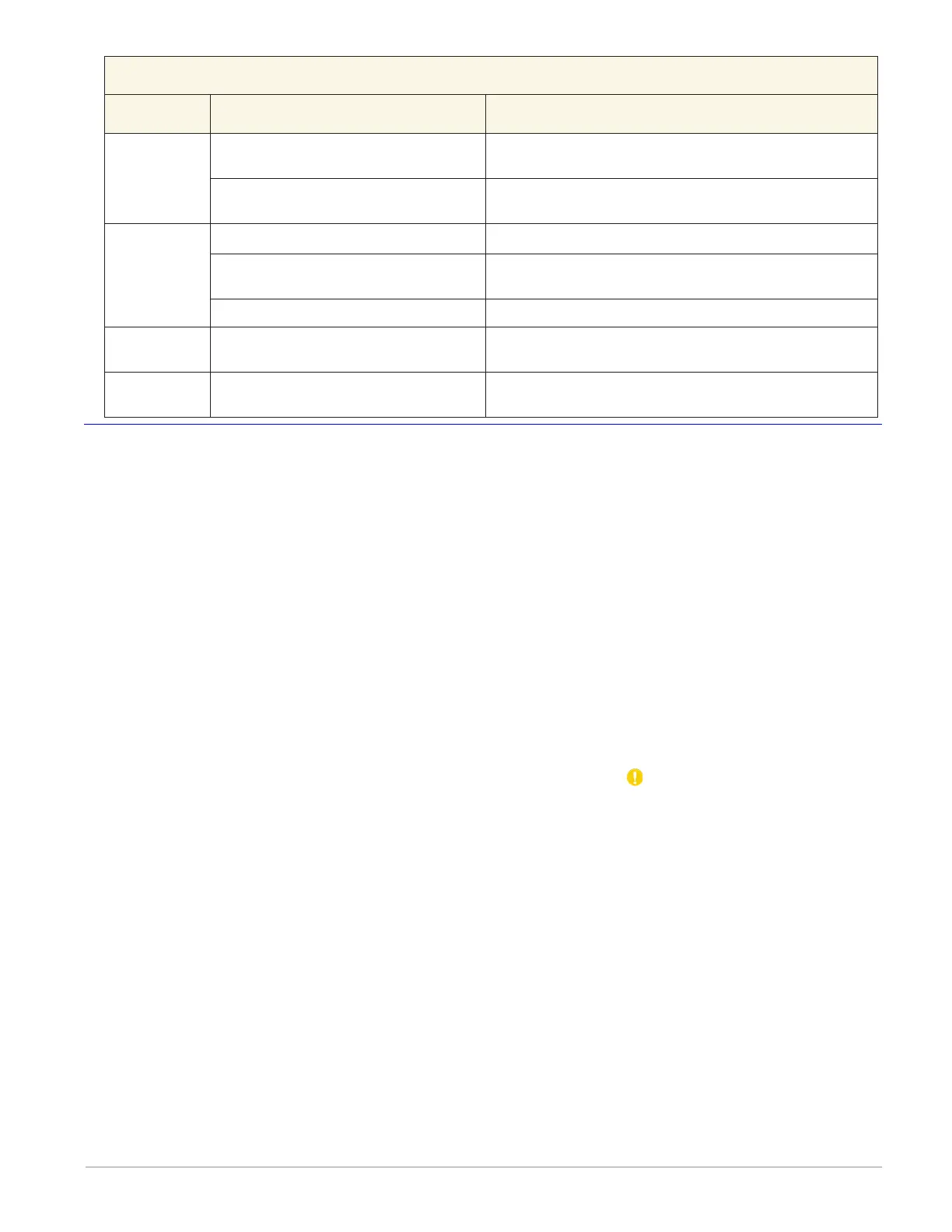